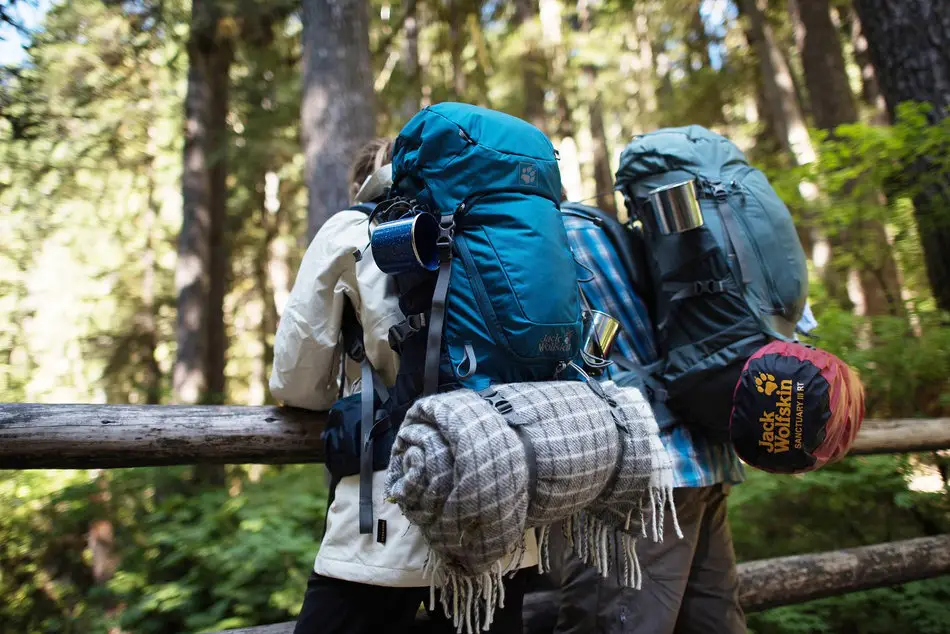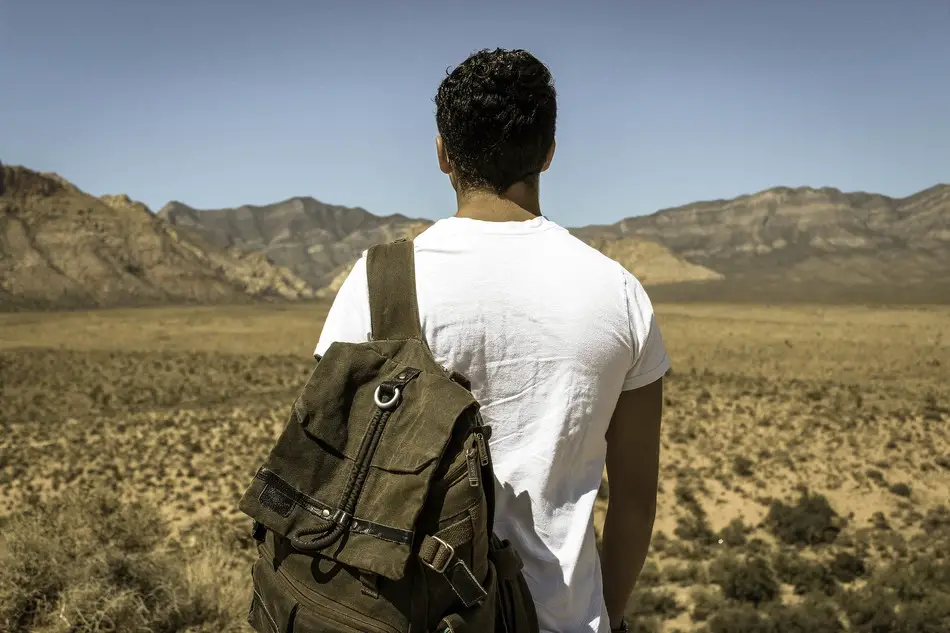Survival backpack is what you take with you once you face an extreme change in your surroundings, be it a natural disaster, civil unrest or the fall of our civilization. Contrary to the famous “bug out bag” (which serves you for about 5 days till you can reach a safe haven), a survival backpack holds all possible items that you need in order to survive for an unlimited period of time.
A well-assembled survival backpack will keep you alive and safe, and will tend to your basic survival needs. You are probably familiar with the rule of 3 (sometimes known as rule of fours) that defines the maximum amount of time you can survive without the following essentials:
- Air: 3 minutes
- Shelter: 3 hours (when there are extreme conditions around you)
- Water: 3 days
- Food: 3 weeks
Well, a survival backpack and its contents will make sure that you have enough food and water, a good shelter over your head and a breathable air. Knowing how to make a survival backpack (AKA survival kit) will provide you with means of navigation, self-defense, tools, medical assistance, and so forth.
In this article I will go into detail about what should be in your survival backpack list, as well as recommend the best items that you can add to it. The right survival backpack essentials and contents, as they are listed below, will save your life.
The article is also summarized on the following video:
The Backpack
Before you collect all the important items four your survival backpack list, you need to get a really durable backpack. It should be well-constructed, preferably water-resistant, should have a lot of compartments and be easy to carry. The color of the backpack is also a significant feature. Some might prepare a brightly colored backpack, to notice it from afar in case you’re separated from it. Other would opt for a more camouflaged version, to hide it from potentials foes.
A good example of such a reliable and sturdy backpack is REEBOW GEAR Military Tactical Backpack. Its dense fabric is exceptionally strong, and it resists water. Add a large capacity, modular carrying system, padded back area, and several additional useful features – and you have a perfect backpack for survival or other purposes. It is also compatible with hydration bladder and is a highly rated Amazon item.
Breathing Mask
Now that you have the backpack, it’s time to fill it with the essentials. Remember that you cannot survive 3 minutes without the air. In such disasters as wildfires, volcano eruptions, industrial fires and general pollution, the air becomes unbreathable.
You will need an air filtration mask to get that precious and clean oxygen. The mask should be of the highest quality, one that filters out any dangerous particles. You cannot compromise as far as this particular item is concerned. Which is why I warmly recommend the mask that I use, BASE CAMP Breathing Mask (on Amazon). It guarantees to filter 99% of smoke, fumes, chemicals, dust and pollen that can cause allergic reactions. The mask is perfectly designed to cover your nose and mouth, and it ensures easy breathing in every situation.
Please notice – the mask is currently out of stock, due to the COVID-19 outbreak. However, you can check other high quality dust masks here.
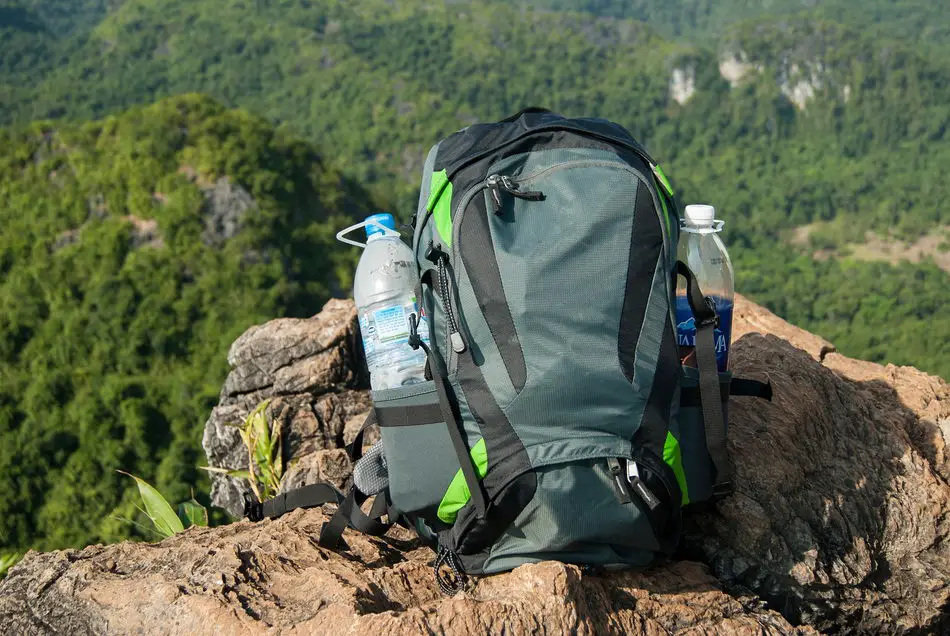
Water Container and Purifier
Now we move to water, the basic survival element without which you won’t last more than three days. You will need to have the right amount of water to drink, in order to constantly stay hydrated. So pack the following two types of items:
- Water container
- Water filter/purifier
You will probably find a natural source of water in the wild, or maybe a well or a pipe. But you mustn’t drink this water directly! It can be chockfull with pollutants, parasites and harmful bacteria. You will need to treat it with purification tablets or a water filter.
After that, you can take this drinkable water with you in a container, such as a hydration bladder or a stainless bottle. Therefore, you now have two more items to add to your survival backpack.
Ration Packages
Your backpack needs to have enough space for items that I will mention further on. So when you pack food, go for the condensed ration packages. They are very nutritious, and yet they don’t overload the backpack. The rations will provide you with more than enough calories to last for days. They are also useful while you’re trying to stay safe during martial law.
A fishing kit will help you acquire additional food in the wild. Again, it doesn’t take much space, all you need is some bait, hook and line, which you can tie to any stick that you find. You now have a serviceable fishing equipment that will enrich your food intake.
Remember that eating raw fish or meat is detrimental to your health. You should pack a lightweight cooking set. I have an extensive post that explains how to cook while camping, you should really take a look.
Shelter: Tent or Sleeping Bag
We all need to rest, sleep and feel safe. We need a base, even a temporary one, that can shelter us from the elements, the enemy, the predators and insect; that can store our things and keep us warm and dry.
You can, of course, build a shelter with a quickly improvised lean-to, or even by covering yourself with twigs, leaves and mud. But much better options exist, and you should add one of them to your survival backpack:
- Space blanket: a lightweight solution that keeps your heat thanks to its metal-coated design. You can cover yourself, or tie it to a tree and create a basic shelter.
- Sleeping bag: another lightweight solution. A good sleeping bag will keep you warm through the night. I suggest you read additional important information on choosing the right sleeping bag.
- Tent: a more advanced choice. Select a quality tent that doesn’t weigh a lot, make sure it’s waterproof and provides enough space for you and your party. You can also combine two solutions, like sleeping in a tent under a blanket or in a sleeping bag. However, make sure you don’t overburden yourself. A heavy and cumbersome backpack will actually harm your survival. For more info, here is the ultimate guide on choosing a tent.
A tarp or plastic sheeting can also be an extremely useful addition that helps making a quick emergency shelter. Moreover, it has a few extra uses. For instance, it can cover and insulate anything, such as wet ground for you to sit on, tent from the outside, food and gear. You can turn it into a stretcher or even a floating device.
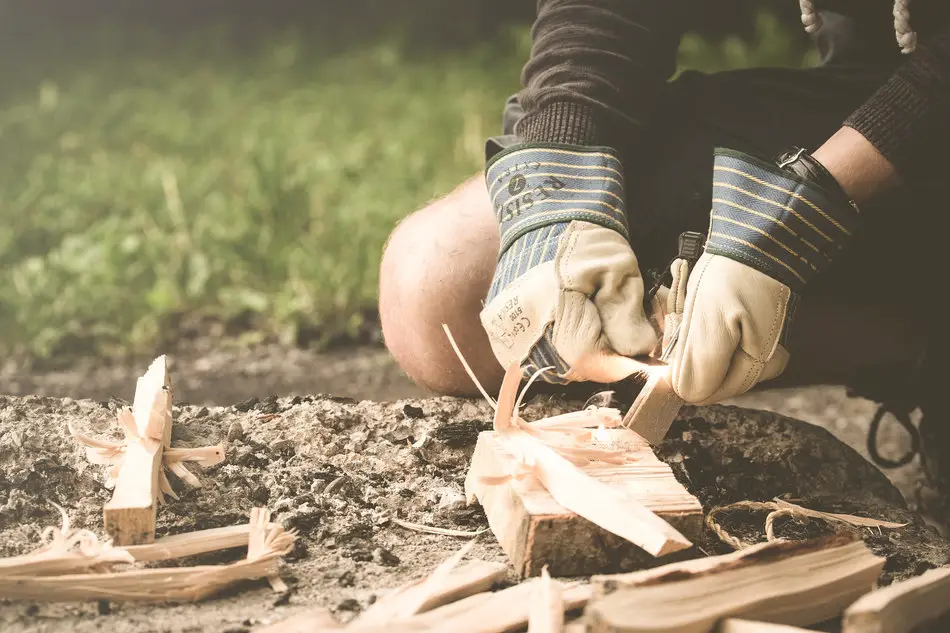
Common Survival Items
Now that we took care of the rule of 3, let’s fill our survival backpack with additional items and tools, which are also necessary for our survival. They will help us to face anything out there, even the most extreme weather.
First aid kit
This one goes without saying. You need a good first aid kit that can immediately treat injuries and illness. It should have items such as:
- Bandages (a lot!)
- Tourniquet – a true life saver that stops blood loss
- Burn gel – to relief the pain of fire-related injuries
- Latex gloves – to prevent contamination while you treat someone else’s injuries
- Splinters are horrible and should be pulled right away, before they cause infection.
- Sutures and needles
- Scissors
- Antiseptic wipes to sterilize wounds and an affected area prior to a procedure
- Gauze will also keep the wound clean
- Aspirin or some other painkiller, to keep you going when you’re hurt
- Antibiotic ointment to battle infection and soothe cuts
- Antidiarrheals to treat diarrhea, because you never know what you’re going to eat and how that food will treat you
- Antihistamines to battle allergies, even if you don’t think you have them
- Sunscreen – you will be outside most of the time, you need the sunscreen to defend your skin against burns and solar radiation
I also made a very helpful (in my humble opinion) list of the best first aid kits, feel free to check it out.
Here is some additional info on using first aid kit during emergencies:
Knife
Your number one tool and self-defense weapon. A knife is an exceptionally versatile item and should be added to any survivalist’s kit. You will need it to cut rope, cut bandages, cut branches, dig holes, open cans, hunt, prepare food, craft more tools and weapons, and so on.
Therefore, it’s hard to imagine a survivalist without a trustworthy knife. You also need to take care of your knife, ensure that it stays sharp and well maintained. I have written a separate article on choosing the best survival knife and taking care of it, since it’s a large topic and can be sufficiently answered in its own article.
Multipurpose Tool
In addition to knife, you simply must add a multi-tool to your survival equipment. Emergency situations require a wide variety of tools, so you should be ready for anything unpredictable. Naturally, you cannot carry a full toolbox with you.
This is when a multipurpose tool comes to the rescue. Get a high quality tool that ideally includes most of the following:
- Pliers
- Flat head screwdriver
- Phillips screwdriver
- Small knife
- Bottle opener
- Wire cutter
- Scissors
- Tweezers
- Miniature saw
- File
As you can see, all these features will come in handy when you need to fix your tent or gear, cook, cut wood or even improvise and craft something new.
Additional Tools
- Shovel – an indispensable tool in the wild, you should add a small shovel to your survival equipment. You can use it to dig drainage trenches, fire pit, latrine, and holes to bury and hide your most valuable items and cans. It’s very useful when building a shelter or even for a self-defense.
- Sewing kit – while surviving in the wild for a long time, your clothes and tent will demand repairs. A handy sewing kit will fix holes and tears in anything made of fabric.
- Small saw – another great tool that will make the process of gathering wood much easier. You can saw off small branches or cut logs for the campfire, or cut longer branches to make a shelter. Get a folding, lightweight saw made from a durable material.
- Crowbar – this tool comes in handy when you reach a (formerly) populated area. It can open locked doors, so that you can forage for food or use the space as a shelter. The crowbar helps lifting objects that are stuck to the ground, hammering tent stakes into the ground, or it can be used for self-defense.
Tape and Cord
Duct tape is also a reliable and universal companion. It’s waterproof and hardwearing, thus it’s ideal for any instant repair, be it of your clothes, backpack, tent or some other gear. Duct tape can be used as a fire-starting material as well as a leak stopper.
Cord, or cordage, is an umbrella term that unites anything from strings to metal wires. You can use it to tie firewood bundles, make a temporary shelter, climb, replace a torn shoelace, drag whatever you hunted, hang food from a branch, away from scavengers and ants, fix a broken arm, and so on. It can function as a clothes line, fishing line, even a line to hang items from your backpack.
A high-quality cord weighs almost nothing, but it can make a huge difference in your situation. This is why I strongly recommend you add a paracord to your survival backpack, such as Amazon’s highly popular Titan SurvivorCord. This patented military cord weighs only about 10 ounces, and yet is remarkably multipurpose. It includes:
- Strong fishing line, a mono-filament that can also tie tools and items together, or fix holes after being melted
- Waterproof fiber that helps starting fires, even under a rain.
- Metallic wire that can be used as a snare, radio antenna, tripwire, and so on.
SurvivorCord is truly a worthy addition to any survival backpack.
Fire starter
Fire has always been the beacon of hope, warmth and protection for those who need to survive on their own. You also need fire to cook, because you cannot survive on raw meat and fish. Which is why I suggest that you carry more than one fire-starting item in your survival backpack. You can bring:
- Matches
- BIC lighter
- Fire striker and flint
You will need one of them when the other is not working. For instance, matches can get wet, and a lighter can run out of gas. Also remember to keep them in a small waterproof container.
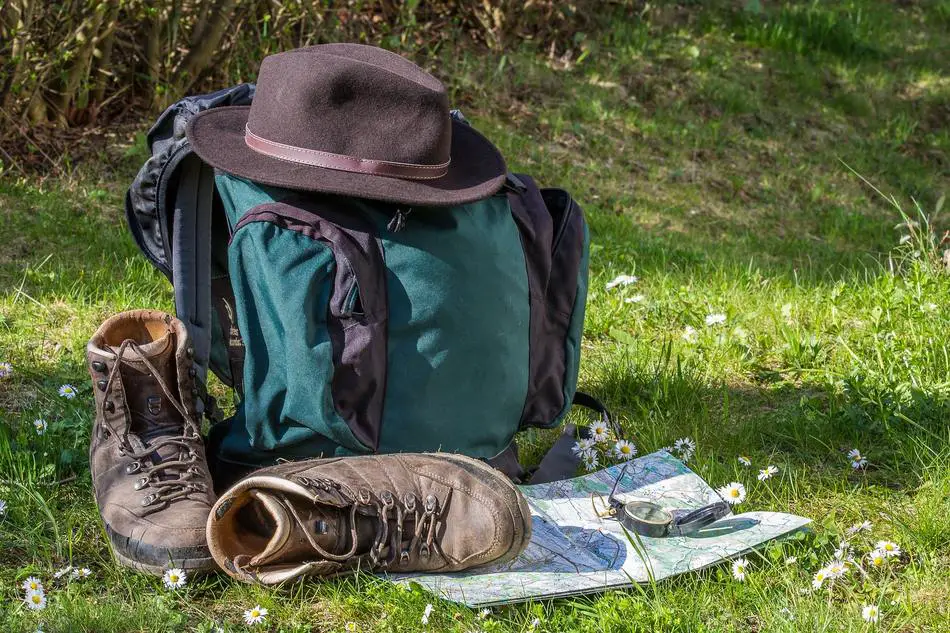
Navigation
When a global disaster strikes, you cannot fully rely on the GPS or the Internet for navigation, since these services can stop working. Pack a topographical map of the area around you, as well as a road map.
Additionally, carry a compass. This article explains how to choose a compass and what compass brands are the best. Learn how to read the maps and the compass, and you will never get lost. A tracking system can break down, but the old and proven navigational means will never fail you.
The GPS can still be available in most scenarios, since not all disasters are that apocalyptic. Therefore, a GPS device becomes an extremely useful tool to navigate by. It can direct you to the next useful location, to a highway exit or a resting area. A very good choice is Garmin GPSMAP 64s (on Amazon). It’s readable in the sunlight, has 4GB of internal memory and 250,000 preloaded geographical cashes. With a 16-hour battery life, this excellent GPS device will help you navigate any terrain and guide you to safety.
Clothes
The first thing to remember is not to stuff your backpack with too much clothing. One change should be enough. An exception to this rule is socks, so pack several pairs to ensure that your feet are always dry. All your survival clothes should be made of quality fabric that dries fast.
Understand that fire alone or a tent might not be enough when you’re facing the danger of hypothermia. Which is why you must wear layered clothing in the cold weather, while the layer closest to the body should be made of wool.
Cotton, on the other hand, is probably the worst choice. It holds the moisture, which adds more weight to you and requires frequent drying, while hurting the clothing’s insulation. This can cause such complications as pneumonia, hypothermia, and so forth. So again, wool or synthetic fabric should be your best choice as far as survival clothing is concerned.
Some specific clothes that you should pack include:
- Hand/foot warmers: Whenever it’s freezing outside, they guarantee to preserve your body heat in important places. They don’t take much space, weigh almost nothing, and should definitely be included in the survival backpack.
- Gloves: None of those fingerless cutesy gloves. Pack a pair of heavy duty cold weather gloves. They will protect you from the frost, the splinters and the cuts. You never know what debris you will need to clear on your path, from branches to broken grass. This is where the gloves will come in handy, so to speak.
- Waterproof jacket: An indispensable clothing item that will protect you from harsh weather.
- Hats: Your head should stay warm as well. A beanie or a cap are a good choice, as long as they block your body heat from leaving you.
- Bandana: Not just a fashionable choice. A bandana can serve you in a warm weather, as it covers your head from the scorching sun. It can also cover your mouth from dust or be used in a variety of other ways, such as a sling or a signaling flag.
Lighting
Having a flashlight is advantageous in any survival situation. You can use it to light up dark places, signal to other members of your party, or with a strong enough beam – blind an enemy or scare away an attacking animal.
Let’s say you found a cave and intend to use it as a shelter. It’s nearly impossible to explore the cave without a flashlight, since you need to make sure there are no holes you might fall through or that the cave is not already occupied by some animals, who do not wish to share the space.
So all in all, a flashlight greatly improves visibility. Don’t forget to pack spare batteries!
If you want your hands to be free, opt for a strong headlamp instead of a flashlight.
Another lighting alternative is chemical lightsticks. They can produce light for 12 hours straight and send signals from a mile’s distance. Their shelf life is particularly long. They can also be used to ward off the animals.
Rescue Items
I mentioned signaling with a bandana or a light earlier. Here are two more signaling items that you can pack and later use to call for rescue.
- Whistle: You can actually hang it on your neck. It’s very useful if your group gets split, or if you need to call for help. You can scream your lungs out, and yet you won’t be heard as far as a whistle can be. A plastic whistle doesn’t cost that much, doesn’t rust, doesn’t sink, so you can always have it on you.
- Mirror: A signaling mirror is very compact, but it can be a true life saver. You’ve probably heard enough horror stories about rescue helicopters missing people right beneath them, who could not signal the pilot. This mirror is the answer to such a situation. It reflect light and can be noticed from miles away.
Personal Items
And now it’s time to use the rest of the space in your survival backpack for items that hold personal importance to you. Not all of them are related to your physical survival, and you might do fine without them. Although I do recommend not to neglect the personal medication and the self-defense tools.
- All important documents: These include passport, identification papers, contracts, car papers, loans, deeds, and so forth. Every important piece of paper that identifies you, your capital, your property, possessions and agreement – should be taken with you if you are forced to leave your house due to a disaster. When the danger passes and you can return, it’s always good to know that you have all your documents safe and ready.
- Personal medications: I have described earlier the ingredients of a good first aid kit. However, there is also the medicine that only you or your family members need. Talk to your doctor and see if he can prescribe you an extra dose that you can safely put in the backpack. This way no disaster will ever surprise you, and you will continue maintaining your health with the right medication.
- Money: If the social structure collapses or the power goes off, you cannot rely on plastic credit cards. It’s always a good idea to carry a small amount of cash to use in a store, a gas station or a motel. Paper money should be carried in a waterproof bag. A pre-paid debit card can also be a nice addition to your backpack, but again – if the power is out, hard cash can be the only way to complete a transaction with a vendor.
- Phone + charger: Again, the satellites might fall and the Internet might crash, but not all disasters affect the world on such a scale. Your phone might always be useful if you’re fleeing a local natural disaster. You can use it to communicate with friends and family, making sure that everyone else is safe. You can call emergency services, navigate, and stay updated on what happens in your region and when it’s OK to come back home. Don’t forget to pack a charger, preferably with an adapter that allows you to charge the phone from a car. A two-way radio can be a nice alternative to a phone.
- Self-defense tools: Worst-case scenarios are not that far-fetched. During the civil unrest or social collapse, you might need to defend yourself against aggressive attackers. In the wild, there are hungry predators that also create the need for self-defense. Therefore, a backpack needs to include some sort of a self-defense weapon. It does not necessary have to be a gun or a knife; there are non-lethal self-defense items such as pepper spray, batons and stun guns. Keep in mind that there are some local laws that you still need to follow, so find out what weapons are OK to be purchased and stored in the survival backpack.
- Important lists and information: Another good idea is to print all the important info on paper and add to the pack. You cannot fully rely on your mobile phone and the Internet to be available at all times. So add the following printed lists and texts:
- Phone numbers and addresses of everyone you know
- Preparedness plan for everyone within your family, what they should do, what are their roles when you have to abandon your household
- First aid procedures
- Important places in your area that you can drive or go to
- What fruits, berries and plants in your area are edible or can be used as a medicine
- Survival instructions, such as how to make shelter, tie various knots, trap small animals, cook food in the wild, make fire, and so on
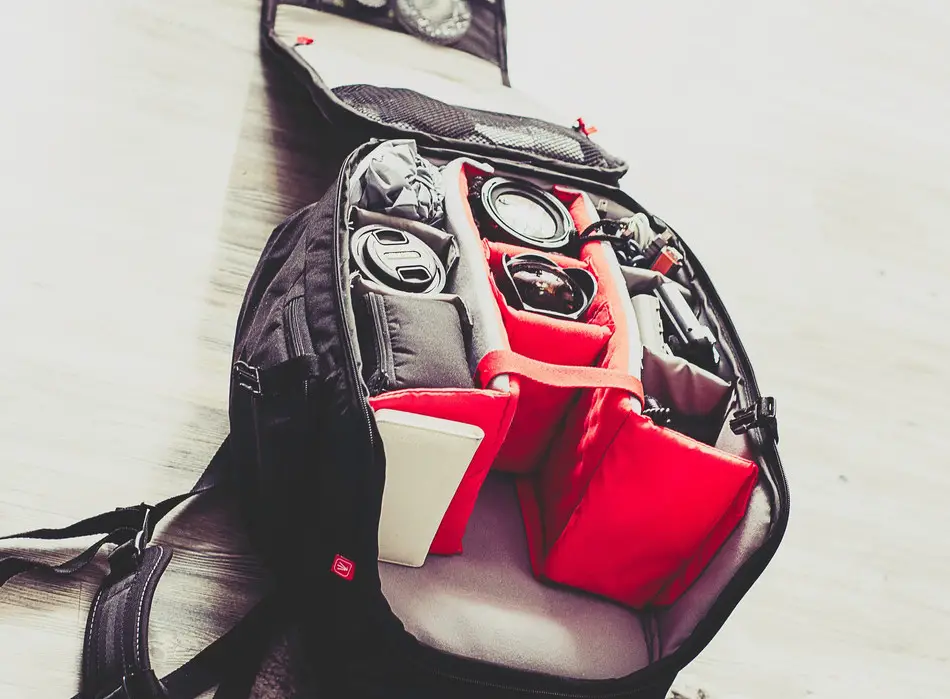
Customize Your Survival Backpack
After you gathered all necessary items, there are five more points that you must consider before deciding that your survival backpack is complete and ready. The backpack must be suitable to your unique needs and circumstances, so read the following points carefully and adjust the backpack accordingly.
The Size of Your Group
Your kit should reflect the number of the people that will be sharing the supplies. Naturally, you will not need that much food, water or first aid items if you are travelling alone as opposed to a family of five. A solo survivor can also be satisfied with a one-person tent, one space blanket, one flashlight and smaller campfire that requires less wood cutting.
On the other hand, keep in mind that some items are not affected by the group size. You will always need at least one set of repair tools, one fire starter, one map, and so on. These are the items that can never be reduced to a zero, even if you’re escaping a disaster by yourself.
Location and Climates
Not all areas have the same environmental challenges. Colder areas to the North force you to pack more warm clothes and hand warmers. Warmer regions demand that you pack a sunscreen and a hat that protects you from heat stroke. Rainy, tropical places force you to be sure that your backpack as well as your clothes are completely waterproof, while everything else is safely packed in waterproof containers and nylon bags.
There are also different animals to watch out for in different regions. There are more snakes and bugs in the sunny regions, so add a bug repellent and anti-venom treatments to the first aid kit, and also print out instructions how to treat a person bit by a snake.
Type of Emergency
The nature of the disaster you are facing also affects the backpack’s contents. For instance, if your region is prone to wildfires, then you certainly must have breathing masks and burn gels. If you prepare for social uprising, then include self-defense weapons, at least of the non-lethal kind.
Amount of Time Until Rescued
If you’re waiting out in a nearby state park, a rescue party will surely get to you in just a few hours. However, if you are hiding or stranded in a large and wild area, such as the Yukon or the Mojave Desert, then you need to build a kit that can support you for weeks. The more remote an area is, the more supplies you will require. You will probably need hunting and fishing equipment, if the area has no immediate access to a convenience store.
Whichever the case, always pack more supplies than you’ll need, because you can never know for how long you will be stuck in one place.
Your Outdoors Experience
You will probably need to carry less items if you have at least some outdoors experience. A person less used to the outdoors will pack a poncho, while an experienced survivalist can improvise one from garbage bags (and also reuse them in a variety of other ways). The latter also does not need several fire starting items, as he or she can start a fire with just one basic fire striker.
Final Words
You can never be too prepared for whatever lies ahead. Hopefully, after reading this article, you now have a sufficient knowledge regarding what goes into your survival backpack and how you can customize it. Always keep in mind that there are some items that weren’t mentioned, and only you can know what’s really important to you and should be included. For instance, if you’re trying to survive in a city where riots and other disasters take place, then my article on urban survival will prepare you to face these extreme challenges.
As the final tip, I would like to recommend that you consider getting an emergency kit. Some of us don’t have the time or the means to acquire every item separately. In the article I linked here you can find a list of the best and most affordable survival/emergency kits on the market.
Stay safe out there!

